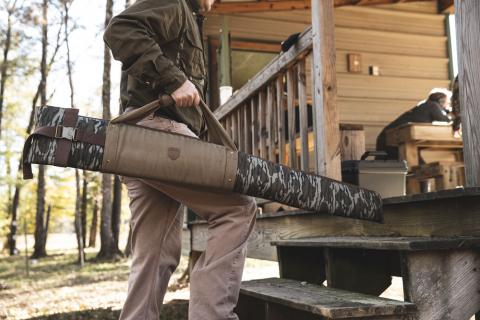David Hawkins | Originally published in GameKeepers: Farming for Wildlife Magazine. To subscribe, click here.
Few subjects can gather such a diverse audience as the hunting of white-tailed deer. It is a subject wrought with details, intermingled with factoids, and served with a strong dose of misconceptions. Pro-shop biologists argue over the seasons and management recommendations in every state with a huntable whitetail population. Among the talking points are the use of minerals and supplemental feeding to augment a deer’s diet. The feeding of corn is another point where debate often rages; is it good, bad or doesn't make a difference? This article is dedicated to the deer, who voicelessly have contributed to the “billions of dollars industry” that is deer hunting.
If you believe the tabloids displayed near the checkouts at most grocery stores, then you know Michael Phelps is the child of an alien, and Elvis is alive and well and working for Mossy Oak in West Point, Mississippi. This comparison can also be made to some of the deer feeding supplements found where such items are sold. Some of these products are designed and packaged to attract hunters and separate them from their hard earned dollars. Others are just what they claim to be, and are worthy of the price when incorporated in a solid supplemental feeding program.
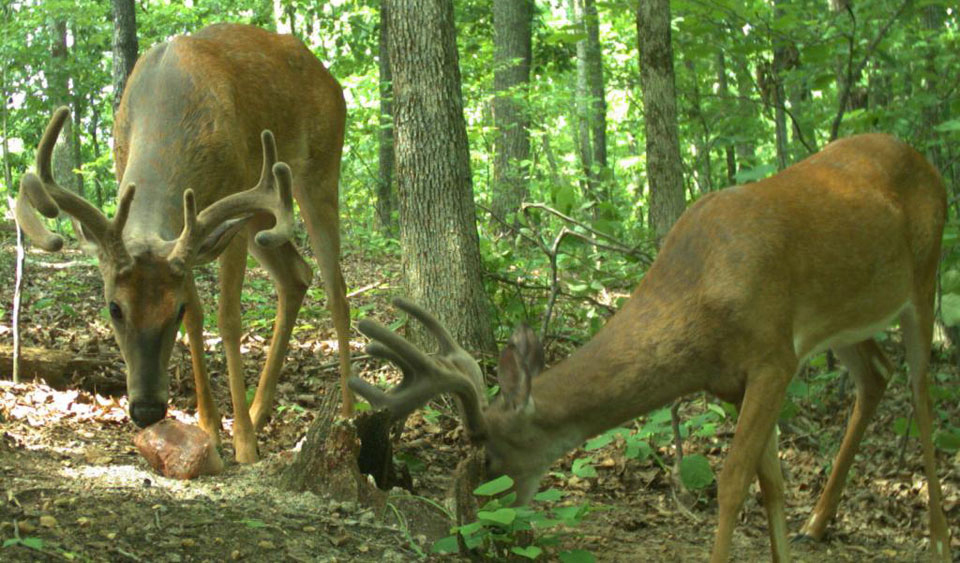
Our family started using “salt licks” almost 60 years ago when dad discovered deer were hitting the “licks” we had out for cattle. Since that time the mineral and supplement industry targeting deer hunters has become a thriving business. Deer can benefit from supplemental feeding and from additional nutrients taken in at a mineral site. In many areas of the country soil nutrients and minerals are somewhat lacking, so mineral licks can be a great benefit as well.
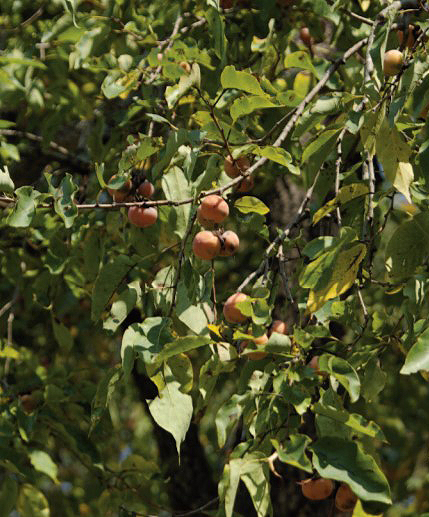
Enhancing native food sources like this can provide tons of food
to your program.
First let’s debunk two common beliefs: First, corn is not a supplement. High in carbohydrates, but lacking adequate protein, deer love the taste and the quick rush of energy. These foods may fill the belly and create heat during cold months, but they will never build strong bones and healthy bodies. Second, dumping a mineral block on a stump during a deer camp work day will do nothing to grow antlers that have already lost velvet and hardened. Deer may be attracted to the block and that might be the hunter’s goal, but unless the lick is recharged periodically during the year the deer don’t get great benefit.
At this point we need to separate the wheat from the chaff. If you just want to bait deer, read no further, go grab a bag of corn, dump it on the ground near your stand (where that is legal), then fuss and complain when all you see are coons, coyotes, crows, does and yearlings. But, if you are a gamekeeper, a conservationist, a serious steward of the land and want the deer herd on your property to reap the maximum benefit of your efforts, then read on, you are about to become a game changer.
What you are about to read is not sourced from pro-shop biologists, but rather from experts who have made their career studying white-tailed deer, their habits and needs. Their combined knowledge of deer and deer habitat is as relevant today as any wildlife study can be. These expert opinions are based in scientific fact…so here goes.
A supplemental feeding plan, which in our case includes the use of minerals, should be just one part of an overall herd management plan. It will take time, effort and resources to bring the plan into effect and results are not immediate. Understanding herd dynamics requires research and collecting knowledge of deer habits and nutritional needs. You can do the research yourself, or invite an expert to advise you. Most wildlife agencies employ biologists whose sole purpose is to work with private land owners/leasers to create a management plan, and evaluate the progress. Prescribed burning, timber management, food plots, deer sex ratios, and predation control are a few of the other factors to be considered. As you can see, best management practices are a year around effort.
According to a study done at Auburn University in Alabama, Dr. Keith Causey discovered deer of all age and both sexes, on average, need about 17% crude protein year-round in their diet in order to fully express their genetic potential for body or antler growth. Add to this the trace minerals and vitamins required and their diet becomes rather extensive. Without going into details we’ll just stick to the protein portion of the diet for now.
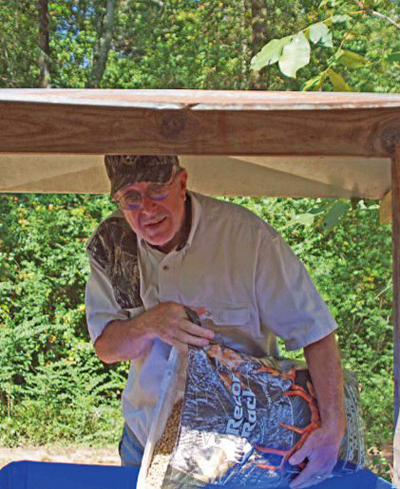
supplements for wildlife. Troughs should be kept clean and
dry
Deer are browsers with a widely varied diet based on food availability and preferred palatability. We all know they favor hard and soft mast when in season and reap the benefits of those foods at the appropriate times. In the fall, acorns are an important source of protein; this hard mast will help build fat reserves for the coming winter stresses. In addition the acorns provide trace minerals that maintain a strong skeletal system which will provide the calcium to grow antlers the following season. But just how much nutrition does a deer get without supplementation, and what are the best delivery systems for dietary augmentation?
Now consider the soil’s ability to move nutrients into that browse to provide the deer with the minimum 17% crude protein. The places are pretty easy to find - southern Illinois, parts of Kansas, Iowa, the Mississippi Delta and other locations of rich alluvial soil. For the rest of us, we’re lucky to see deer get 8 to 10 percent of that magic 17% from native foliage. To make up the difference, we’ll need to engage in supplemental feeding on an annual basis.
“Since, in most instances, deer with access to supplemental feed, will still eat mostly natural forage, the ideal supplement will be one quite high in protein and energy. If we desire to bring a diet averaging 8+/- percent protein up to 17 +/- percent we need a concentrated supplement. For example, deer generally consume 3-4 pounds of forage (air-dried weight) per 100 pounds of body weight per day. If this forage averages 8 percent protein one could never boost it to 17 percent with a supplemental food containing less than 20 percent protein unless the supplement replaces the natural forage entirely.
On the other hand, if the supplemental food were a high energy product with 30-40 percent crude protein, about ¾ pound of this supplement per day per deer per 100 pounds would result in the overall crude protein level of the natural forage, plus the supplement being about 17 percent. “In my opinion, this should be the function of a diet supplement. It should not be a substitute for natural forage,” Wrote Dr. Causey in the report “Feeding Soybeans to Supplement White-tailed Deer.”
Soybeans vary in protein content based on how they were grown, but greater than 20-percent is about the lowest end of the scale. In some cases soybeans can be purchased in the field, or directly from the farmer. Care should be taken that the beans are well dried, or molding and sprouting could occur. Roasted soybeans cost about $18 per 50 pound bag and are available where most livestock feeds and supplies are sold. Forage soybeans of the natural sort are also available. The bottom line is deer will eat both. Some small feed mills may grind their own mix, adding other ingredients such as corn, rice bran, molasses, or other attractants. Be careful of these since government regulations require feeds to have a guaranteed analysis attached to the bag.
Record Rack pellets are recommended by Mossy Oak as an excellent supplement for several reasons. Available at Tractor Supply and most feed stores, Record Rack contains all of the micronutrients deer need. It stores well in a dry environment until needed in #40 bags. The pellets are highly digestible and each bag comes with a guaranteed analysis.
When you have chosen a pelletized or meal supplement, consider the manner of delivery. GameKeepers and BioLogic recommends a covered trough, raised off the ground. Where wild hogs are a problem a low fence, which deer can leap over, will help keep the hogs out. Be forewarned, a sounder of hogs can destroy a feeding station in no time. The trough should be 18-24 inches off the ground so rainwater cannot contaminate the feed. Several times each year, clean the trough with a disinfectant. Allow it to dry before refilling. One trough per 100 acres of managed land is sufficient.
Remember, supplemental feeding is not providing a herd with a primary diet. They should be getting that from natural forage. If there will be gaps in the supplemental feeding regime, plan these times for the peak of spring green-up, the heaviest acorn fall or when food plots are at maximum potential.
“Food plots implemented as part of wildlife management plan may fill a nutritional gap even in good habitat. For example, a food plot may help antler growth for deer by providing a year-round, sustainable source in concert with native plants, especially when combined with a harvest strategy that balances the herd with food supply,” according to Becky McPeake, Professor of Wildlife Extension at the University of Arkansas Division of Agriculture, Cooperative Extension Service and the Arkansas Forest Resources Center. Food plots provide well above the 17% protein requirement and it is shown whitetails can/will use them for the majority percentage of their diet.
In her report, Establishing Wildlife Food Plots, McPeake stated that a common question from hunters/farmers/land managers is “what to plant.” Before answering that question McPeake urges assessment of what is already on the land. “You could be destroying perfectly good native wildlife habitat and replacing it with something that offers less nutritional value, little cover or is less productive, not to mention the added expense of maintaining a cultivated food plot.”
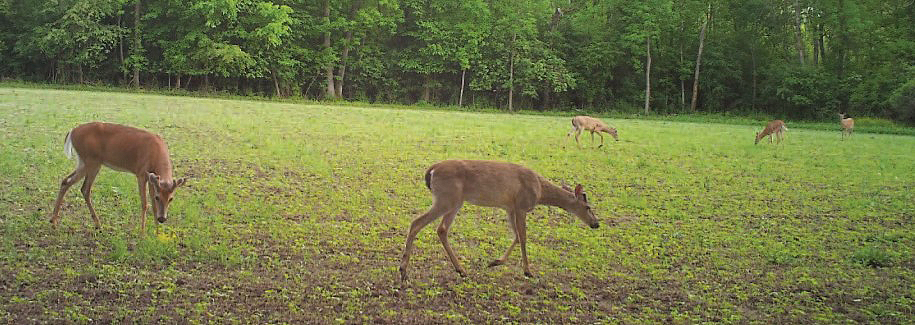
The report goes on to state: Plants contain essential nutrients for wildlife, including protein, carbohydrates, lipids, or fats, vitamins and minerals. The optimal forage plants are those that are very digestible, low in fiber and high in protein and energy. For deer, a lack of protein, energy and minerals (calcium and phosphorus) most often limits weight, antler development and reproduction. Plant nutrient levels tend to be the highest in the spring and fall and tend to decline in late summer and winter months. Ironically, the forage quality of plants declines in late summer when deer need energy for continued lactation and antler production.
In the Arkansas study the crude protein of native plants and cultivated wildlife plants ranged from 4 percent to 39 percent, depending on the vegetative structure (e.g., leaf or twig/stem) and season. Protein tends to concentrate in the growing parts of plants and their seeds. Legumes, because of their ability to fix nitrogen in roots, are generally high in protein.
Where the soil is void of constant heavy snow cover, food plots can be a 12-month commitment. Depending on the size of the plot a crop rotation may be used so that a palatable offering is available to deer at all times, allowing the supplement to augment natural or managed vegetation. Such a rotation could be, but is not limited to summer crops, such a Lab-Lab, clay peas, forage soybeans, milo and others that convert the minerals in the soil into a palatable buffet for deer.
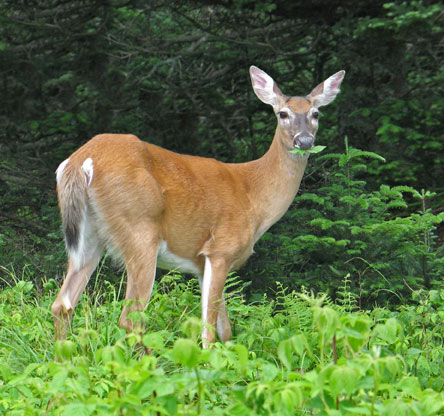
areas to stimulate forbs and reducing timber canopy will all help to
significantly increase native food supplies.
Ragweed, black berry, pokeweed and greenbrier will do the same when given an extra dose of fertilizer. Where food plots are near one another, a gamekeeper can manage one as a winter plot and the other as a summer plot. This allows for maximum land use.
Those lease holders managing a herd on large tracts of timber company land, where plots are limited to road sides and loading ramp sites, will benefit from mowing and fertilizing native plants. Never underestimate the value of a well-managed weed patch. Summer clipping and fertilizing promotes new growth which deer use readily. When pine stands are thinned, the canopy is opened and allows the sun to reach the earth, propagating a multitude of long dormant forbs and grasses. Again, a plant becomes a delivery system for the soils minerals. So could or should deer get all they need for peak health from natural forage? The answer is no.
Before embarking on a supplemental feeding program, land managers are wise to consult with wildlife officials about possible restrictive measures. A wildlife biologist and/or someone who understands whitetail nutrition and digestion should also be consulted. One should consider other measures of providing nutrition in addition to supplemental feed. If closely examined, fertilizing, mowing and/or cutting native browse, or planting food plots are both less expensive and will both produce better quality forage that will more easily help your herd reach that 17% threshold. In summary here are a few suggestions for herd management and supplemental feeding:
- Choose a high-protein ration such as Record Rack that a complete the trace minerals deer require.
- Deer require 12 to 17 percent protein in their average diet to reach optimum growth and health potential.
- Deer most benefit from supplemental feeding during the spring when bucks are growing antlers and does are pregnant with fawns. In the fall a high protein diet is needed to build winter reserves and help does that are nursing fawns. Basically, they need the supplement more when their other food sources are lacking most or stressed or during times when their bodily systems require it most.
- A balance of high protein plants, from food plots or native plants is required as well as a pellet feed supplement.
- Bush-hogging and fertilizing native plants will create new high protein growth deer find palatable and beneficial.

















